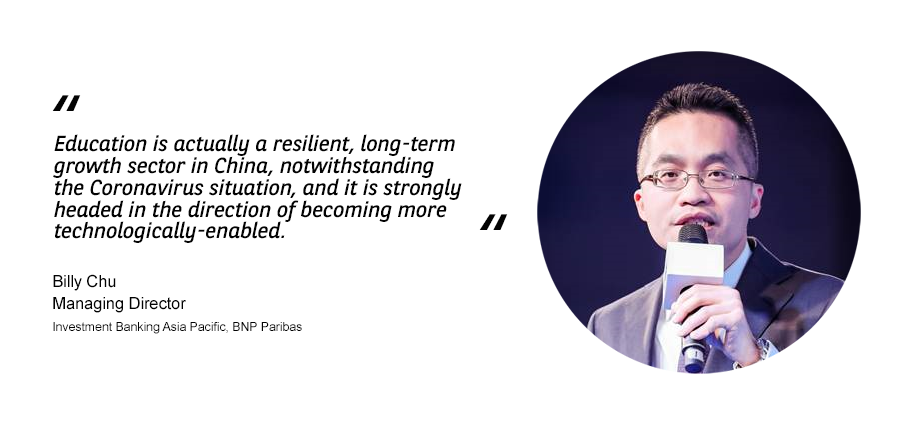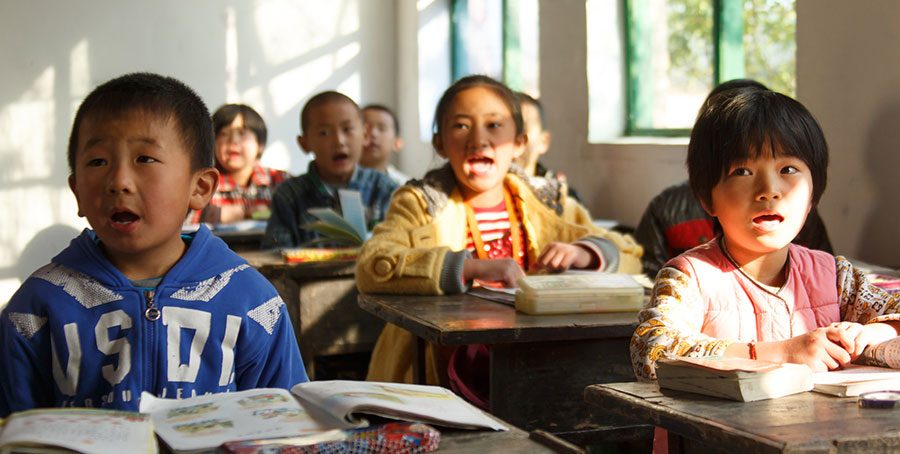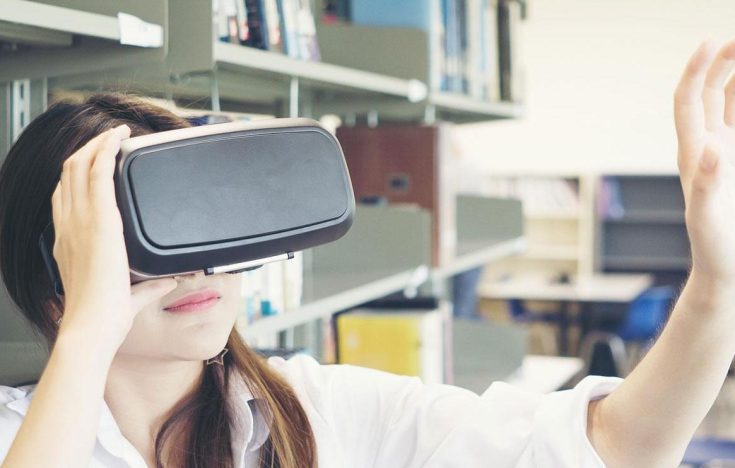An elementary school-aged boy sits with 21 other pupils in his daily English class. His task for the morning: write a short essay describing a gift you’ve received, and how it made you feel.
He glances at the work of his fellow pupil on the right, who obligingly moves his elbow to allow a better view. Both students startle slightly when their teacher, who has been quietly observing the pair, gently reminds them to each keep their eyes on their own work.
This could be a scene playing out at any school across the globe, except the young boy is not in a classroom, his friend is 100 miles away, and there is no teacher peering over his shoulder – at least in the literal sense. Like an estimated 190 million children across Hong Kong SAR and China, the boy has been learning from home since schools were suspended due to the threat of Coronavirus.
The situation is familiar to some teachers and schools, but technology has come a long way since they were last forced to shut their doors during the Severe Acute Respiratory Syndrome (SARS) outbreak of 2003. A lack of protective equipment like face masks for kids – and their teachers – has left authorities with little choice but to ask schools to teach remotely. They are now being encouraged to implement technology solutions to bring to life virtual classrooms.

While many parents who are also working from home are feeling the pinch, there is a silver lining for the education and online training sector in China, according to Billy Chu, a Managing Director in BNP Paribas’ Investment Banking division.
“Education is actually a resilient, long-term growth sector in China, notwithstanding the Coronavirus situation, and it is strongly headed in the direction of becoming more technologically-enabled,” says Mr Chu. An education sector investment banking expert, Mr Chu and his team at BNP Paribas have worked on Initial Public Offerings (IPO) for some of the biggest names in the business, including Maple Leaf, China East Education, China Education Group and Edvantage Education Group. With a strong focus on technology-based teaching environments differentiating their value proposition, all four companies have significantly outperformed the market since their IPOs.
Long-term trend
“People moving into the middle class tend to spend more of their money on education, as they rightly see it as a path to even greater prosperity for their families,” explains Mr Chu. According to estimates from McKinsey and Company, China will have 550 million middle class consumers by 2022 – with “middle class” being defined as those with a household income of US$11,500 to $43,000 per year. While the one child policy has been eased in recent years, demographic trends indicate Chinese families are having fewer children anyway. That means even more resources concentrated on a smaller number of children.
Discretionary spending on education in China tends to be directed towards extra tutoring after school and enrichment classes, says Mr Chu. A large proportion of that extra tutoring will be delivered online, potentially through the services of one of the new, private education companies whose growth has been propelled through access to capital markets funding and the advice of banks like BNP Paribas.
Revitalising the sector
“Private education in China had somewhat stagnated in the early 2010s,” says Mr Chu. Rules and regulations were ambiguous, making investors cautious to commit funds. Education policies imposed restrictions on how private schools or vocational training centres could access bank funding.The sector started to show green shoots around the middle of the decade, when government regulations became clearer and more straightforward, and the People’s Bank of China started to implement its vision to expand China’s services sector (including private education) through structural reforms.
VR technology goes a long way to limit distractions and encourage greater concentration. But for children especially, school is also about emotional intelligence and social learning. Can a VR headset provide those lessons? Maybe.
Mr Chu also
credits his team at BNP Paribas for playing its part in the sector’s revitalisation.
“We put in a lot of effort liaising with government stakeholders, as well as
education companies themselves,” explains Mr Chu. “So it wasn’t just about
financing. We also contributed our advice on internal controls and financial
management, among other things.”
The poster
child for the new generation of Chinese education providers is Maple Leaf
Education. BNP Paribas arranged the company’s Hong Kong IPO in 2014 when it was
just a small K-12 (kindergarten to year 12) company; now it is the largest
international education company in China when measured by number of
students.
“Maple Leaf’s
IPO was unique for the time, as education companies had previously been cut off
from capital markets. It was something of a watershed, because since then, BNP
Paribas has facilitated more than US$1.5 billion in Hong Kong IPO financing for
education companies in China,” adds Mr Chu.
The show must go on
“Coronavirus has shown that every education provider is going to need some sort of cloud-based, virtual learning platform in the future,” says Mr Chu. “Investors realise this too, which is one of the reasons why companies providing online education software and virtual reality (VR) solutions have seen their share prices outperform in recent weeks.”In 2018, a Chinese government agency known as the Ministry of Industry and Information Technology released a document outlining a blueprint for growing the VR ecosystem in China, with the aim of eventually becoming the world leader in the technology by 2025.
But even with the weighty support of the Chinese government, will VR technology ever be lifelike enough to replace a real-life classroom?
“Well, that’s the question,” admits Mr Chu. “I think VR technology goes a long way to limit distractions and encourage greater concentration. But for children especially, school is also about emotional intelligence and social learning. Can a VR headset provide those lessons? Maybe. I don’t doubt there are some smart entrepreneurs somewhere working on it.”
